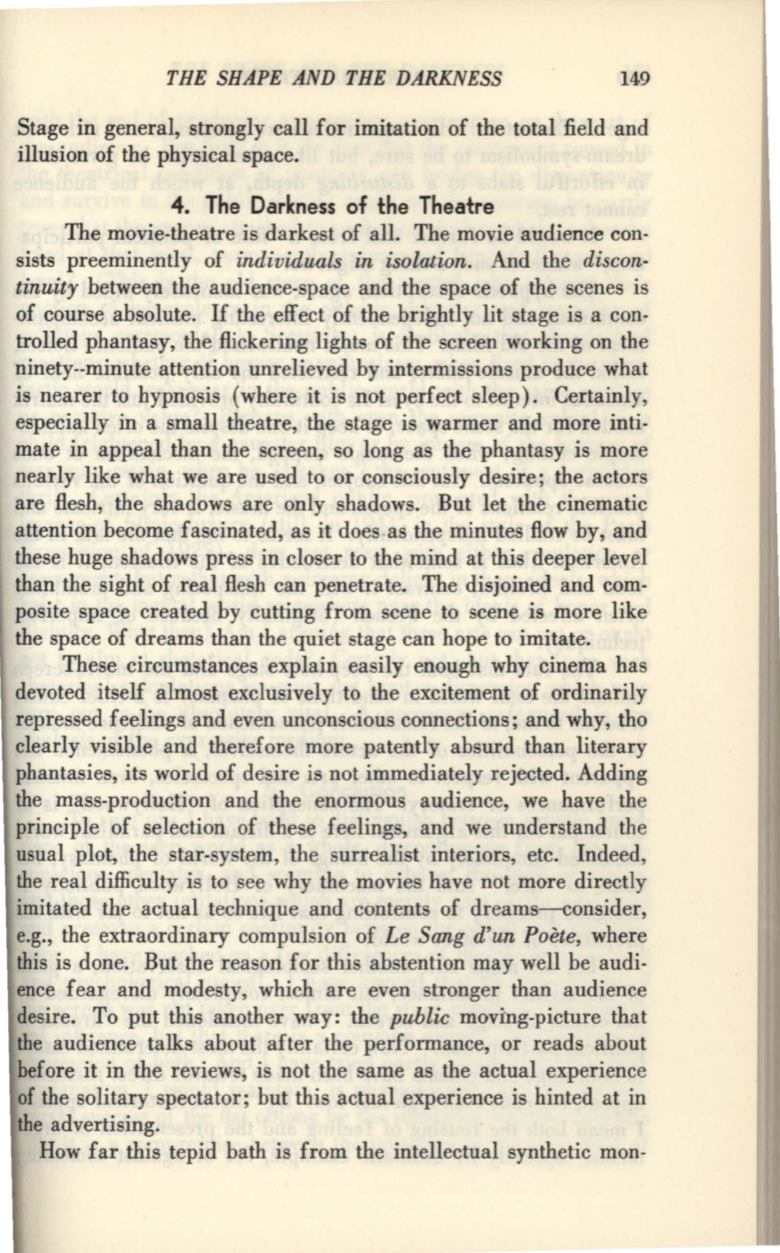
THE SHAPE AND THE DARKNESS
149
Stage in general, strongly call for imitation of the total field and
illusion of the physical space.
4. The Darkness of the Theatre
The movie-theatre is darkest of all. The movie audience con–
sists preeminently of
individuals in isolation.
And the
discon–
tinuity
between the audience-space and the space of the scenes is
of course absolute.
If
the effect of the brightly lit stage is a con–
trolled phantasy, the flickering lights of the screen working on the
ninety--minute attention unrelieved by intermissions produce what
is nearer to hypnosis (where it is not perfect sleep). Certainly,
especially in a small theatre, the stage is warmer and more inti–
mate in appeal than the screen, so long as the phantasy is more
nearly like what we are used to or consciously desire; the actors
are flesh, the shadows are only shadows. But let the cinematic
attention become fascinated, as it does as the minutes flow by, and
these huge shadows press in closer to the mind at this deeper level
than the sight of real flesh can penetrate. The disjoined and com–
posite space created by cutting from scene to scene is more like
the space of dreams than the quiet stage can hope to imitate.
These circumstances explain easily enough why cinema has
devoted itself almost exclusively to the excitement of ordinarily
repressed feelings and even unconscious connections; and why, tho
clearly visible and therefore more patently absurd than literary
phantasies, its world of desire is not immediately rejected. Adding
the mass-production and the enormous audience, we have the
principle of selection of these feelings, and we understand the
usual plot, the star-system, the surrealist interiors, etc. Indeed,
the real difficulty is to see why the movies have not more directly
imitated the actual technique and contents of dreams-consider,
e.g., the extraordinary compulsion of
Le Sang d'un Poete,
where
this is done. But the reason for this abstention may well be audi–
ence fear and modesty, which are even stronger than audience
desire. To put this another way: the
public
moving-picture that
the audience talks about after the performance, or reads about
before it in the reviews, is not the same as the actual experience
of the solitary spectator; but this actual experience is hinted at in
the advertising.
How far this tepid bath is from the intellectual synthetic mon-


